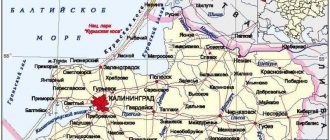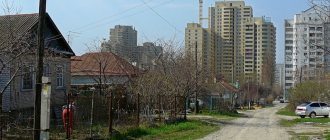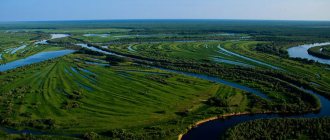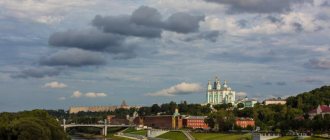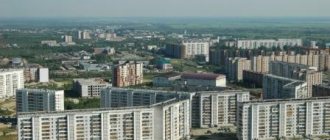Tomsk region is part of: Siberian Federal District, West Siberian economic region. Administrative center is the city of Tomsk. List of all Russian settlements in the Tomsk region (region 70). Catalog of cities, towns, villages within the regions of the region itself. Detailed articles on each locality, interesting facts.
- Area: 314,391 km²
- Time zone: UTC+7:00
- Population: 1,070,544 people (2021)
- Density: 3.41 people/km²
- Code of the subject of the Russian Federation: 70
- Telephone code: 3822
What holiday is it today?
February 10, 2022, Thursday
Today are holidays, events: Diplomat's Day Tomorrow: World Sick Day Discovery of insulin
Today is the Orthodox holiday: St. Ephraim the Syrian. Venerable Ephraim of Novotorzhsky. Venerable Ephraim of Pechersk, Bishop of Pereyaslavl. Venerable Theodosius of Totem, Spasosumorin of the monastery, leader and founder... Tomorrow: Transfer of the relics of the holy martyr Ignatius the God-Bearer. Saints Gerasim, Pitirim, Jonah, bishops of Great Perm, Ustva...
Today is a national holiday: Ephraim's Day... Tomorrow: Lawrence's Day
Seasons
Seasons, four periods of the year (spring, summer, autumn and winter) characterized by certain average temperatures. The period during which the Sun passes through one of these sectors is called the season. Spring in the Northern Hemisphere and autumn in the Southern Hemisphere begin when the Sun passes through the initial circle of declination and its right ascension is 0° (vernal equinox). Summer in the Northern Hemisphere and winter in the Southern Hemisphere occur when the sun's right ascension is 90° (summer solstice). Autumn in the Northern Hemisphere and spring in the Southern Hemisphere begin when the sun's right ascension is 180° (autumnal equinox). The beginning of winter in the Northern Hemisphere and summer in the Southern Hemisphere is considered to be the winter solstice, when the direct ascension of the Sun is 270°... Next: Seasons. Russian folk calendar. Monthly words...
Content
- 1 General information
- 2 Geography 2.1 Rivers
- 2.2 Lakes
- 2.3 Vegetation
- 2.4 Climate
- 4.1 War 1941–1945 and post-war period
Tomsk region
- one of the constituent entities of the Russian Federation, located in the south of Western Siberia.
The administrative center of the region is the city of Tomsk
.
By decree of the Presidium of the Supreme Soviet of the USSR dated June 26, 1967, the Tomsk region was awarded the country's highest award, the Order of Lenin.
- for success in labor and production activities.
Folk calendar about every day
Every day one season always replaces another and this determines a person’s way of life. In connection with this, a folk calendar was formed in which there were practically no nameless, unmarked days. Every day was special, had its own purpose. All this was determined by climate conditions and astrological phenomena.
A calendar is a system for counting periods of time. The first calendars arose a long time ago, in ancient times, because there was a need to measure time. The word calendar comes from the Latin words caleo - to proclaim and calendarium - debt book. This is due to the fact that in Ancient Rome the beginning of each month was especially proclaimed, and because it was customary to pay debts on the first day of the month. Different peoples counted time differently. Some calendars are based on the changing phases of the moon - lunar calendars; in others - the change of seasons - sunny; in others, the length of the year was coordinated with the change of seasons, and the counting of months was associated with the phases of the Moon. Such calendars are called lunisolar.
In Rus', the calendar was called a monthly calendar. Every day, the month book covered the entire year of peasant life, “describing” day by day, month after month, where each day had its own holidays or weekdays, customs and superstitions, traditions and rituals, natural signs and phenomena. The cyclical nature of the calendar is reminiscent of human life, where spring is youth, summer is heyday, autumn is the time of harvesting fruits (it’s good if there are some, otherwise you can live your life without collecting fruits), winter is the time of wisdom and peace. This cyclicality and rhythm determined the way of life of the farmer. The folk calendar was an agricultural calendar, which was reflected in the names of the months, folk signs, rituals and customs. Even the determination of the timing and duration of the seasons is associated with real climatic conditions. Hence the discrepancy between the names of the months in different areas... Next: Folk calendar...
Notes
- Population and ethnic composition of the Tomsk region
- Results of the 2002 census: ethnolinguistic situation in the Tomsk region
- Cultural heritage
- ↑ a b
Archives of Russia. Administrative-territorial division of the Tomsk province - Tomsk region (1604-1997). - In turn, the Tobolsk governorship became part of the single governorship general of Perm and Tobolsk. Perm and Tobolsk should be governed by one governor-general, “the ruler of the viceroyalty of Perm and the governor of Tobolsk” (Kashkin_Evgeniy_Petrovich). The abolition of the Siberian Kingdom and the transfer of power to the newly formed Tobolsk governorship took 2 years from 1780 to 1782. In 1780, the Perm governorship was formed, in 1782 - Tobolsk.
- The Tomsk region included the following counties: Achinsky, Kainsky, Yenisei, Narymsky, Tomsky, Turukhansky.
- Nek. sources report that in 1779-1782, due to the incompleteness of the reform of the Perm-Tobolsk governorship, the current problems of governing the Tomsk region were solved by the governor-general of the Kolyvan governorship, located closer to Tomsk - see Encyclopedia of the Tomsk Region, 2008
. - see documents of the CDNI TO: fund 4204, inventory 4, file 454, sheet 2 “Copy for the Tomsk region”. The original of the decree is stored in the State Archive of the Russian Federation: GA RF: fund R-7523, inventory 15, file 99, sheets of documents 1-3)
- ↑ a b
CNDI TO: To the 70th anniversary of the Tomsk region, stages of its creation - During the formation of the Tomsk Regional Committee of the All-Union Communist Party of Bolsheviks, its leader at first was also the head of the Tomsk City Committee of the All-Union Communist Party of Bolsheviks.
- After the Civil War, there was a massive outflow of intellectual and labor resources from Tomsk to other regions (primarily to Novosibirsk, the production and economic base was virtually absent. As a result, cultural and social decline, as well as the dubious “honor” of becoming one of the GULAG islands for accepting thousands and thousands of repressed people from all over the country were sent here to the taiga wastelands and to the Ob Islands.
- Evaluation against the background of conditions throughout the rest of the country. In the capital, it was believed that Tomsk in the post-war period was not at the high level of modern science and that a new domestic scientific center should be created “from scratch,” as Academician M.A. believed. Lavrentyev, they decided in an “open field near Novosibirsk”...
- After working in Tomsk E.K. Ligachev was introduced to the leadership of the USSR in 1982-1991.
- that is, the external requirements of the capital center
- Orders of the Soviet past
- The beginning of the Andropov campaign against alcoholism of the CPSU Central Committee occurred during the initial period of Comrade Comrade coming to the post of General Secretary of the CPSU Central Committee. M.S. Gorbachev. Who soon himself stopped this obvious bacchanalia of trying to fill the country’s concentration camps with able-bodied men for a low-cost and “effective” increase in the country’s GDP.
- However, the plant was lucky: by the second half of the 1990s, the new manager, Ivan Klein, managed to make the enterprise modern, profitable and one of the regional leaders in product quality.
- Among the first cooperatives in the field of electronics, then, in 1989, on the basis of MZhK DSK, the Elecard cooperative appeared, one of the current leaders in the production of unique software and hardware systems.
- With a clear process of young people leaving for the cities and stagnation in cultural and social terms.
Fishing calendar for every day
The fishing calendar should not be taken as an absolutely indisputable truth. Fish biting is greatly influenced by a whole range of natural factors, as well as the influence on the nature of man himself. You must not forget that the fish’s bite depends and is determined not only by the calendar dates and biological cycles of their life, reflected in the calendar, but also, no less, by the state of their habitat; the bite also depends on weather conditions: air and water temperatures, cloudiness, wind direction and strength, etc... Next: Fishing calendar...
Geography
Tomsk region on the map of Russia Map of the Tomsk region with the boundaries of the districts indicated on it.
The Tomsk region lies in the southeastern part of the West Siberian Lowland. The total area of the region is 316.9 thousand km², 1.9% of the territory of Russia. The region ranks 16th among the constituent entities of the Russian Federation in terms of territory. From north to south the length of the region is about 600 km, from west to east - 780 km. The Tomsk region is an internal region of Russia, bordering on all sides with other constituent entities of the Russian Federation. In the north lie the Tyumen region and the Khanty-Mansi Autonomous Okrug, in the south - the Kemerovo region and the Novosibirsk region, in the west - the Omsk region, in the east - the Krasnoyarsk Territory. The relief of the Tomsk region is mostly flat, only in the southeast the northern spurs of the Kuznetsk Alatau extend onto its territory. The highest point of the region is 274 m above sea level, the lowest is 34 m above sea level.
see also
: books on the geography of the Tomsk region.
Rivers
The main waterway of the region, the Ob River, divides the territory into two almost equal parts, flowing diagonally from southeast to northwest. The length of the Ob River in the region is 1065 km. The main tributaries of the Ob in the Tomsk region: Tom, Chulym, Chaya, Ket, Parabel, Vasyugan, Tym. The navigation period lasts 170-180 days. There are 18.1 thousand rivers, streams and other watercourses flowing in the region, the total length of which is about 95 thousand km. There are 1,620 rivers with a length of more than 10 km in the region (the total length of all these rivers is 57.2 thousand km).
Lakes
The largest lake in the region is Mirnoye in the Parabelsky district, the lake area is 18.3 km².
Vegetation
Most of the region's territory is located in the taiga zone, and is therefore difficult to access; only in the southern regions is there a transition to forest-steppe. The swampiness of the territory is very high, swamps occupy 28.9% of the region's area. The largest Vasyugan swamp in the world is located in the Tomsk region. Forest vegetation occupies 63% of the total vegetation cover, meadows occupy only 4%.
Climate
The climate of the area is sharply continental with long, cold winters and short, relatively hot summers. Average temperature −0.6 °C, absolute minimum −55 °C, absolute maximum +36 °C. The climate of Western Siberia is greatly influenced by the Atlantic Ocean and the continent. The amount of precipitation depends on the moisture brought from the Atlantic, and the influence of continentality is expressed in the high frequency of anticyclonic weather and in the intensive transformation of air masses in summer and winter. The formation of the warm regime of the region is greatly influenced by the openness of the territory of the West Siberian Lowland. This leads to the free penetration of cold Arctic air from the north, as well as the removal of heated air masses from south to north.
Orthodox calendar about every day
Orthodox calendar: Orthodox, Church and Christian holidays.
The church year is an alternation of weekdays and holidays. On weekdays, a person is called to work “by the sweat of his brow to earn his bread.” Holidays are given in order to feel liberation, to rise above the bustle and routine of the world, to feel involved in the highest of worlds, “where there are no illnesses, sorrows and sighs, but endless life.” Since ancient times, holiday cycles have been associated with the seasons. The pagans associated them with the worship of the forces of nature, the cult of which in the Old Testament was replaced by gratitude to the Creator for the universe. And although the connection between holidays and the seasons has not completely lost its power, since God is present in everything, in the plant and animal world, in human works, it nevertheless faded into the background, giving way to a spiritual foundation built on the Sacred Scriptures. The history of Orthodox holidays dates back to the times of the Old Testament. Each of the Orthodox holidays is dedicated to the remembrance of the most important events in the life of Jesus Christ and the Mother of God, as well as the memory of saints... Next: Orthodox calendar...
Russian folk calendar for every day
The word “sign” comes from the word “notice”, i.e. observe. As a result of observing what happens around a person every day, he accumulates life experience. This knowledge was passed down from generation to generation, carefully preserved and people trusted it as a sacred book. Many signs have come to us from the depths of centuries without losing their knowledge. Each of us is free to choose: to dismiss all this as an absurd superstition or to take a closer look at the signs and take the centuries-old experience of generations more seriously. Most of us, when taking exams, ask them to scold them, boasting about some kind of good fortune or luck, spit so as not to jinx them or knock on wood, take a detour if a black cat crossed the road, are afraid of the number 13 and much more. And who among us does not have lucky things, numbers? Who has never resorted to the help of fate at least once in their life, who has not believed in secrets? It’s as if everything connected with signs is hidden somewhere deep in our subconscious. Often we remember them mechanically, unconsciously, or just as a joke. But, undoubtedly, the signs contain a lot of accurate knowledge and practical wisdom of our ancestors. They cover all the characteristic, often difficult to perceive, natural phenomena. Signs have preserved a lot of what was in old folk holidays and customs; they help predict the weather, grow crops... Next: Folk signs...
Links
- Official website of the Tomsk Region Administration
- Official website of the Tomsk Region Duma
- Detailed map of the Tomsk region
- Tomsk Region Book of Records
- Red Book of the Tomsk Region
- Photos of Tomsk region
- Peoples of the Tomsk region
- Visual and anthropological studies of small peoples in Western Siberia
- Tomsk region contributes 76% of taxes to the federal budget
- Matvienko: There is an insufficient level of income in the Tomsk region
- The tourist route in the Tomsk region received national status
| Administrative division of the Tomsk region | |
| Cities of regional subordination: Kedrovy, Seversk, Strezhevoy, Tomsk | |
| Cities of district subordination: Asino, Kolpashevo | |
| Districts (administrative centers in brackets): | |
|
|
Holiday calendar, dates and events of the year
All state and professional holidays in Russia, including significant World and International holidays, and other equally interesting holidays and events about every day.
The holiday has always kept pace with the history of mankind. Social time can be divided into three types: everyday life (weekdays), weekends and holidays. Everyday life is a series of practices repeated day after day and every day (work). Weekends are regular breaks from the rush of everyday life. It is believed that on weekends a person should restore his strength after working days. Day off, non-working day. A holiday is a day of celebration established in honor or in memory of someone or something. A day or series of days celebrated by the church in memory of a religious event or saint... Next: Calendar...
Prayer book, Orthodox prayers for every day
Prayer is the most powerful means for healing all illnesses - both physical and mental. Prayers can be laudatory or grateful, petitionary and repentant. If we have offended God, sinned, we must ask Him for forgiveness, that is, repent. Such prayers are called repentant prayers. If everything is fine with us, if we and our loved ones are healthy and prosperous, if we have a place to live, something to wear, something to eat, we must glorify and thank God for this. Such prayers are called praise or thanksgiving. If some misfortune, illness, trouble or need happens, you need to ask God for help. Such prayers are called petitionary... Next: Orthodox prayers...
Zodiac, astrological, eastern calendar. Zodiac signs
In ancient times, to establish the calendar, priests used knowledge of the positions of all the planets. Before the reform of Peter 1, the New Year was celebrated on the Day of the Autumn Equinox. On this day, according to ancient legend, the most peaceful treaty was concluded between the Great Race (ancient Slavs) and the Great Dragon (ancient Chinese) and it was approximately 7518 years ago... For the ancient Slavs, the calendar month corresponded to the lunar cycle from new moon to new moon, taking into account such Thus, the relationship of the entire annual cycle with astronomical and natural phenomena. There was no coherent calendar system. The main natural phenomena are still considered to this day to be the days of the solar equinox and solstice - the Slavic holidays Maslenitsa, Kupala, Ovsen and Kolyada. But during the time of Peter 1, all ancient Slavic calendars were abolished and a new Western European calendar from the Nativity of Christ (Julian calendar) was introduced, while the beginning of the calendar was moved to January 1. The Julian calendar (old style) did not take leap days into account and accumulated one extra day every 128 years. After the October Revolution in 1918, the Gregorian calendar (new style) was introduced in Russia, according to which an amendment of 13 days was introduced. The calendar of the ancient Slavs was based on two planets: the Sun and the Moon. And now they don’t use anything at all. The calendar has become static. There is no such thing as the calendar, it turns out, resting on some planet. Nobody even knows about it. There are just some standard numbers, there are months and holidays. The calendar is based on the Sun and Moon. Why is this so? Because these two luminaries influence the Earth. The Earth revolves around the Sun, and the Moon revolves around the Earth. And these two luminaries create the atmosphere on the planet. From here the calendar is built... Next: Astrological calendar...
History of the Tomsk region
More details
: Tomsk history
First mention of the concept Tomsk region
associated with the administrative reform of the Siberian territories carried out by Empress Catherine II in 1764-1782[4].
It was decided to abolish the Kingdom of Siberia, created in 1764 as part of the Russian Empire, creating (as in other regions of the country) instead 4 governorships
(the prototype of future
provinces
): Tobolsk, Perm, Kolyvan and Irkutsk.
In the process of the abolition of the Siberian Kingdom
in 1775-1780, it was decided to divide
the Tobolsk governorship
[5] into two
regions
within it -
Tobolsk
and
Tomsk
[6][7], which were finally formed in 1782.
During the next reform, in 1796, both regions were merged into a single Tobolsk province
, from which on February 26, 1804 it was again separated into an independent and influential (central) Siberian province -
Tomsk province
[4]. The Tomsk province existed until May 25, 1925, and was transformed first into the Siberian Territory (1925-1930), then into the West Siberian Territory (1930-1937), and into the Novosibirsk Region (1937-1944).
After a series of administrative-territorial reforms of the early Soviet government (1925-1940s), in August 1944 the territorial-administrative unit of the country was re-formed (now a federal subject
) -
Tomsk region
. This process in the summer and autumn of 1944 was not easy.
Second time (after 1782) Tomsk region
was recreated, in the approximate, slightly trimmed boundaries of the former Tomsk and Narym districts of the former Tomsk province in the summer of 1944. The process began with the decision of the Organizing Bureau of the Central Committee of the All-Union Communist Party of Bolsheviks dated July 26, 1944 “On the formation of the Tomsk region as part of the RSFSR.” Then there was a Resolution of the Central Committee of the All-Union Communist Party of Bolsheviks, by which the new Tomsk region was withdrawn from the territories of the Novosibirsk region; The decree of the main governing body of the country determined the administrative (regional) center - the city of Tomsk, and also described the areas that were to enter the region or be liquidated. On August 13, 1944, in accordance with the decisions of the Central Committee of the All-Union Communist Party of Bolsheviks, the Decree of the Presidium of the Supreme Soviet of the USSR was signed on the creation of a new Tomsk region in the RSFSR[8].
However, the administrative party bodies of the Novosibirsk region were very dissatisfied with this formulation of the question ( Source of the statement?
) and repeatedly tried to influence the highest governing bodies of the USSR with requests to cancel or suspend these decisions. (
Source of approval?
) Only on August 22, the Novosibirsk Regional Committee of the All-Union Communist Party (Bolsheviks) for the first time considered the issue of forming the Tomsk region by separating part of the territories from the Novosibirsk region. On August 25, Tomsk residents first officially learned about the creation of the region - only on this day the newspaper “Red Banner” of the Tomsk City Committee of the All-Union Communist Party of Bolsheviks published the text of the Decree of the Presidium of the Supreme Soviet of the USSR dated August 13, 1944[9]. In September, the formation of governing bodies of the new region took place: first, on September 2, the Tomsk regional committee of the All-Union Communist Party of Bolsheviks was created [10] [9], and then the regional committee formed the regional executive committee, the regional court, the regional military registration and enlistment office, the regional committee of the Komsomol and the regional trade union committee. At the same time, the capital forms the UNKVD (police) of the Tomsk region, the prosecutor's office of the Tomsk region and the UNKGB. The status of the main newspaper of the region, the organ of the regional committee and the regional executive committee, is assigned to the newspaper "Red Banner".
War 1941-1945 and post-war period
The Tomsk region was re-established in the 20th century during the war. After a period of disastrous stagnation of the territory and its center - the city of Tomsk in 1918-1940, when it suddenly became a second-rate provincial city-district center from the status of the capital of the entire Siberian region [11]. Under the conditions of occupation of the western regions of the USSR by German troops, many industrial enterprises, educational institutions (including higher military institutions), theaters, etc. were evacuated to Tomsk and Asino. The city and region began life as a new industrial and defense center of the country. The high scientific and educational potential has been preserved - the city university, higher education institutions and research institutes not only did not weaken[12], but began to actively develop in the post-war period. There has been a dramatic change in the economic and social infrastructure of the entire region and its center. Even in the conditions of re-evacuation of some universities, colleges, industrial enterprises and research institutes, the Tomsk region continued to increase its economic potential.
Heyday 1964-1984
The flourishing (rapid development - in comparison with other regions of the USSR) of the region in economic (including agro-industrial production) and socio-cultural terms occurred in the period from the second half of the 1960s to the early 1980s. To achieve this, there was a successful combination of objective and subjective factors. Objective factors of economic development: exploration and start of industrial production in the Tomsk region of oil and gas (including the creation of hydrocarbon processing enterprises - one of the largest in the world, the Tomsk Petrochemical Plant, as well as the installation here of the UMNTS - Central Siberia Main Pipeline Management) systems. , construction of oil towns Strezhevoy and Kedrovy; launch of the Tomsk enterprise of the country's nuclear project
— Siberian Chemical Combine and the new city attached to it;
deployment of high-tech military-industrial complex enterprises in Tomsk for the production of military electronics; development of transport communications (river port, airport, fleet electronic warfare, railway stations and new stations, bus station, new roads and bridges). Subjective factors: high ambitions[13] and organizational abilities of the first secretary of the OK CPSU E.K. Ligacheva. Having the motivation to become the best of the Soviet regional leaders, he fully realized his managerial talent and the experience he gained as a manager during the creation of the Novosibirsk Academic Town (1950s). In Tomsk, thanks to this (voluntarism?) modern cultural objects, cinemas, libraries, and the DPP meeting house appeared; powerful territorial organizations of artists, poets, writers, theater workers, etc. were created. In addition to the objective factors [14] of the accelerated development of the region, E. Ligachev took measures to accelerate the development of the base of construction industry enterprises and the development of Glavtomskstroy, to the development of public transport (the appearance of a trolleybus , new modern trams in the 1980s, new fleets of city and intercity buses, a taxi fleet, etc.), to an advanced solution to the food problem for the population: deployment of a network of poultry farms around the regional center, pork production, organization of year-round supply of vegetables and fruits to citizens from greenhouse complexes (Tomsk, Kulagina street and near the village of Kuzovlevo). The region became exemplary
in a number of positions; secretaries of the CPSU Central Committee (the de facto leadership of the country) came here to study the work of the Tomsk House-Building Plant and the Tomsk MZhK created with its participation, the organization of the work of the Pig Farm with a capacity of 108 thousand heads of pigs per year and other achievements.
In 1967, the region was awarded the Order of the October Revolution[15].
Perestroika and post-perestroika
Perestroika in the Tomsk region began with painful remnants of the legacy of the era of outgoing socialism: Andropov’s war (1982-1984) against drunkenness and alcoholism resulted in the destruction of a number of food enterprises, in particular in the dramatic destruction of unique beer brewing vats at the Tomsk Beer Plant (1984)[17]. Liberalization of the political regime led to a change in the economic structure: since 1987, centers for scientific and technical creativity of youth (NTTM, the prototype of future student business incubators)
), the first cooperatives [18].
However, the general financial crisis of the country in 1988-1990, predetermined by the entire era of stagnation in the USSR, had an extremely detrimental effect on industry and social development. Military orders from the state and enterprises in the defense sector, the military-industrial complex, were curtailed, they began to get rid of their workers en masse, many of them closed. The requirement of the country's central authorities for self-sufficiency and self-sufficiency undermined the ability of agricultural enterprises to operate: collective farms stopped working and social tension arose in the countryside. Former leaders of industrial enterprises and party authorities in the region in the period 1991-1994 were actively involved in the redistribution of property. Without summing up and without analyzing the reasons for the collapse of the Soviet country and the collapse of its communist ideology, the Tomsk region, together with the entire country, entered the era of wild capitalism
. The result was the closure of many unprofitable industries (including in the military-industrial complex), but new commercial and manufacturing companies that were highly profitable and attractive for employment appeared. These include, in the post-perestroika period, TomskNeft (headed by L. Filimonov) and YUKOS, which replaced it, Tomsk Aviation Enterprise (1992-1999), most food industry enterprises, new enterprises in the field of telecommunications and information technology, and in the media industry. The question of the ability to effectively manage enterprises in real market conditions has become tough.
Modernity
The current position of the region is characterized as stable, while in 1999-2002, at public hearings and expert commissions, the main strategic guidelines for the possible progressive, sustainable development of the region were developed. In particular, the Tomsk region, in 2001, for the first time in the country, adopted its own program for innovative development of the region. Specially trained (in the leading cities of Russia, as well as in Western Europe) experts prepared directions for the development of the regional element base, and by 2007 almost all of them began to operate: centers for audit and commercialization of scientific and technical developments and inventions, centers for Russian and international technology transfer, business incubators of various specializations, etc. It was important to create in Tomsk, in one of the five cities of the country, a project for a classic technology park - the Tomsk special economic zone of technology-innovation type. This allows us to focus on the economy of knowledge, intelligence, innovation, to more fully realize the potential of universities and about a hundred research institutes and design and research centers, institutes, design bureaus and laboratories. The situation with industrial production and the oil and gas sector is characterized by the withdrawal of their capital from the taxable structure of the Tomsk region in 1995-2005. The same process is also characteristic of nuclear
sectors. After the decline of 1992-1996 in the economy of food and agricultural production, the situation in the countryside has somewhat stabilized[19].
Dream books online, interpretation of dreams
A dream book is nothing more than an interpreter of dreams and dreams, a translator of dreams. Since ancient times, people have been using dream books; dreams have always been given great importance, and people have often noticed the prophetic properties of some dreams. The dream book can become your faithful assistant every day and throughout your life, thanks to the dream interpreter you can always make the right decisions, the dream book will help you resist temptations in time, and will warn you against wrong steps and frivolous actions. Further…
